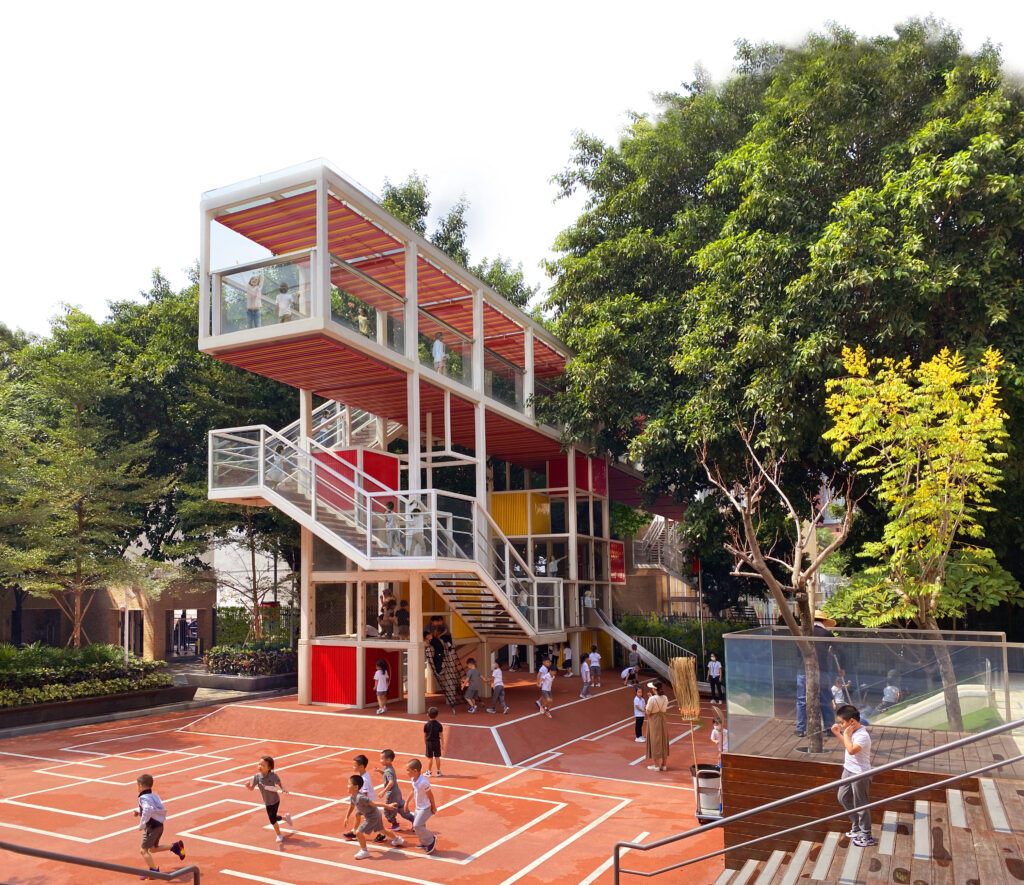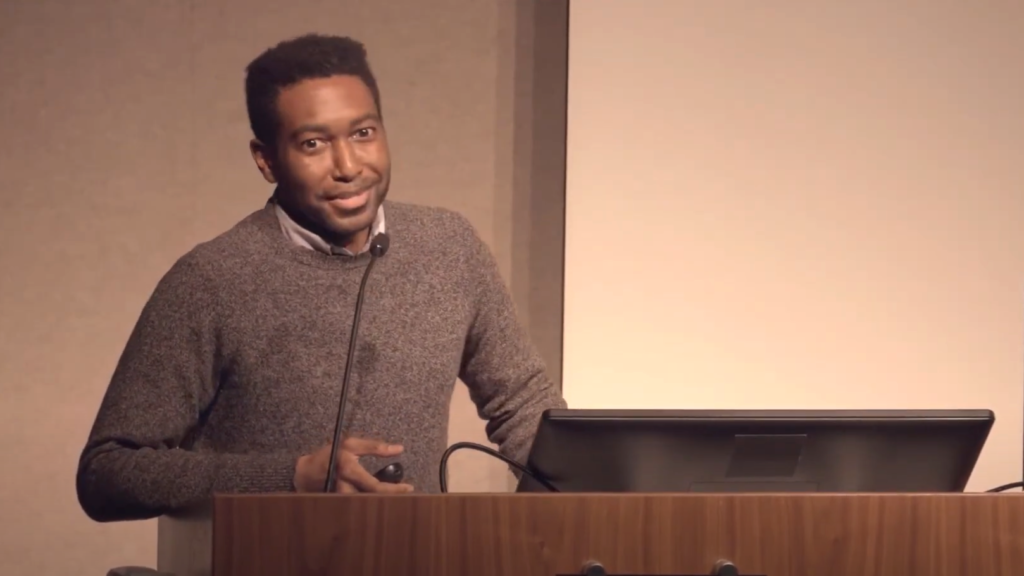Places designed for humans, at any scale, need to recognize and reflect our species’ 6 most fundamental space-related needs. The examples in the text that follow have been selected to align with the interests of Conscious Cities readers.
Comfortable control
Humans need to feel that they have comfortable control over the physical environments that surround them5. There are many sorts of choices that can be provided to people—they can, for example, choose different paths to walk through a space, have several seating options to select from, etc. Research by Iyengar and Leper has shown, however, that when we need to make a selection, we are happier with the option selected and generally are better off psychologically when we choose from a carefully curated set of options, say 4, than we are if 30 are presented8. This means that designers need to get to know their users well enough to determine which possibilities should be made available.
When we settle into a space for a period of time, for example, when we sit on a public bench, it temporarily becomes “ours;” it is our territory. We feel more comfortable in spaces that we feel we control and that clearly “belong” to us6. Our space on that proverbial bench can be clearly delineated by armrest “dividers” or because the bench is the size of our culture’s more formal personal space bubble; when that’s the case, no one else would sit down beside us except in an emergency situation. Physically clear boundaries can potentially preclude other methods of claiming territories that may be more distasteful to society overall. Atkinson, for example, reports on people who play music loud enough for others to hear so that they can claim territories around their bodies by driving others away from themselves2.
During times when we have comfortable control over our physical environment our brains seem to function more effectively. O’Neill links employee control to better professional performance by individuals and groups15, for example. Knight and Haslam have linked environment control with higher levels of wellbeing, as well as better cognitive performance.10
Emotional attachment
Humans become emotionally attached to places.11 We’re more likely to be happy, or experience other positive emotions when we’re in places we’re attached to5. We also generally find it cognitively restorative to be in spaces to which we’re attached, also7.
We’re most likely to become attached to places that reflect something about ourselves that we value/are proud of13, such as our home country or a place where a sport we participate in is played. We can become attached to homes, natural spaces, neighborhoods, and even places we’ve never been that are important to our culture, etc. Since we form strong links to places we’re attached to, we become upset if those spaces are modified in ways that—or if potential modifications are discussed that—change the aspect of the place that we’re tied to. For example, people who feel that they are artistic who have bonded to an area with lots of art galleries and similar sites will be upset if those art galleries are replaced by mass market clothing retailers. Conversely, attempts to reinforce the aspect of the space that is important to us are positively received16. So, to build on the last example, if an art museum were added to the art galleries in the zone to which we’d become attached, that museum would be seen positively. The key point, as Scannell and Gifford point out, is that we are attached to the meanings we have to a place and not its physical features.
Cognitive restoration
When we do focused knowledge-type work, we deplete our stocks of mental energy and design can help us rebuild them so that we return to our peak levels of cognitive performance and regain our ability to socialize pleasantly with others5. Restorative spaces need to be engaging sensorally, while also supporting reflection without much effort on our part9. Looking at nature has been shown to improve moods and ability to concentrate, to cognitively restore us18. Visible water, a river a fountain, or something similar, in a natural or manmade environment has a particularly strong effect on perceived cognitive restoration20. Urban views can also promote restoration if they are fascinating enough to draw us in but don’t require much effort to understand3.
Alignment with activities
Our minds work best when the energy we draw from the world around us aligns with planned activities21,17. That means when we’re doing a mentally taxing task, the design of the place we’re in is should be generally relaxing and when we’re engaged in a mentally less challenging activity the space surrounding us can be more energizing.
Support the familiar
While we prefer to be in familiar-type spaces, we don’t want environments to be completely static; our moods, for example, are best when spaces slowly and gradually evolve from one form to another19. The same goes for aesthetic elements, such as patterns and paintings; we prefer items that are familiar but not so familiar that they are uninteresting12.
Presenting important information about us, with others
People all need to silently communicate who they are to others4, 14. Spaces need to support meaningful expression via behaviors and also through displays of objects, art, etc., with cultural, and other, significance. This means we need to be able to stand and sit at preferred distances from other people, for example, because relative distances maintained provide important information about us. Humans also have a fundamental need to communicate relative status1. Status can be based on a number of factors, many not financial, and design can support status signalling in various ways–for example, by providing opportunities to display diplomas from prestigious academic programs.
Design that recognizes human’s 6 fundamental space needs—for control, attachment, restoration, activity support, familiarity, and communication—is good design—it enhances cognitive and emotional wellbeing.
References
1 Cameron Anderson, John Hildreth, and Laura Howland. 2015. “Is the Desire for Status a Fundamental Human Motive? A Review of the Empirical Literature.” Psychological Bulletin, vol. 141, no. 3, pp. 574-601.
2 Rowland Atkinson. 2007. “Ecology of Sound: The Sonic Order of Urban Space.” Urban Studies, vol. 44, no. 10, pp. 1905-1917.
3 R. Berto, M. Baroni, A. Zainaghi, and S. Bettella. 2010. “An Exploratory Study of the Effect of High and Low Fascination Environments on Attentional Fatigue.” Journal of Environmental Psychology, vol. 30, pp. 494-500.
4 Mihaly Csikszentmihalyi and Eugene Rochberg-Halton. 1981. The Meaning of Things: Domestic Symbols and the Self. Cambridge University Press: Cambridge.
5 Robert Gifford. 2014. Environmental Psychology, Fifth Edition. Optimal Books: Colville, WA.
6 Robert Gifford, Linda Steg, and Joseph Reser. 2011. “Environmental Psychology.” In Paul Martin, Fanny Cheung, Michael Knowles, Michael Kyrios, Lyn Littlefield, J. Overmier, and Jose Prieto (eds.) IAAP Handbook of Applied Psychology, First Edition, Blackwell Publishing: New York, pp. 440-470.
7 T. Hartig, F. Kaiser, and P. Bowler. 2001. “Psychological Restoration in Nature as a Positive Motivation for Ecological Behaviors.” Environment and Behavior, vol. 33, no. 3, pp. 590-607.
8 Sheena Iyengar and Mark Leper. 2001. “When Choice Is Demotivating: Can One Desire Too Much of a Good Thing?” Journal of Personality and Social Psychology, vol. 79, no. 6, pp. 995–1006.
9 S. Kaplan. 1995. “The Restorative Benefits of Nature: Towards and Integrative Framework.” Journal of Environmental Psychology, vol. 15, pp. 169-182.
10 Craig Knight and Alexander Haslam. 2010. “The Relative Merits of Lean, Enriched, and Empowered Offices: An Experimental Examination of the Impact of Workspace Management Strategies on Well-Being and Productivity.” Journal of Experimental Psychology: Applied, vol. 16, no. 2, pp. 158-172.
11 Gerard Kyle, Alan Graefe, and Robert Manning. 2005. “Testing the Dimensionality of Place Attachment in Recreational Settings.” Environment and Behavior, vol. 37, no. 2, pp. 153-177.
12 Annukka Lindell and Julia Mueller. 2011. “Can Science Account for Taste? Psychological Insights Into Art Appreciation.” Journal of Cognitive Psychology, vol. 23, no. 4, pp. 453-475.
13 Lynne Manzo. 2003. “Beyond House and Haven: Toward a Revisioning of Emotional Relationships with Places.” Journal of Environmental Psychology, vol. 23, pp. 47-61.
14 Clare Cooper Marcus. 1995. House as a Mirror of Self: Exploring the Deeper Meaning of Home. Conari Press: Berkeley, CA.
15 Michael O’Neill. 2010. “A Model of Environmental Control and Effective Work. Facilities, vol. 28, no. 3/4, pp. 118-136.
16 Leila Scannell and Robert Gifford. 2010. “Defining Place Attachment: A Tripartite Organizing Framework.” Journal of Environmental Psychology, vol. 30, pp. 1-10.
17 Nancy Stone. 2003. “Environmental View and Color for a Simulated Telemarketing Task.” Journal of Environmental Psychology, vol. 23, no. 1, pp. 63-78.
18 A.van den Berg, S. Koole, and N. van der Wulp. 2003. “Environmental Preference and Restoration: (How) Are they Related?” Journal of Environmental Psychology, vol. 23, pp. 135-146.
19 Nicolas Watkins, Frances Cole, and Sue Weidemann. 2010. “The War Memorial as Healing Environment: The Psychological Effect of the Vietnam Veterans Memorial on Vietnam War Combat Veterans’ Posttraumatic Stress Disorder Symptoms.” Environment and Behavior, vol. 42, no. 3, pp. 351-375.
20 Mathew White, Amanda Smith, Kelly Humphreys, Sabine Pal, Deborah Snelling, and Michael Depledge. 2010. “Blue Space: The Importance of Water for Preference, Affect, and Restorative Ratings of Natural and Built Scenes.” Journal of Environmental Psychology, vol. 30, no. 4, pp. 482-493.
21 J. Wohlwill. 1966. “The Physical Environment: A Problem for a Psychology of Stimulation.” Journal of Social Issues, vol. 22, no. 4, pp. 29-30.










